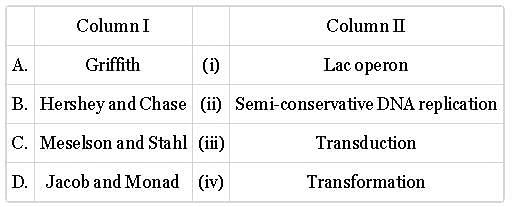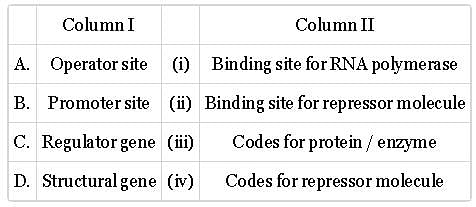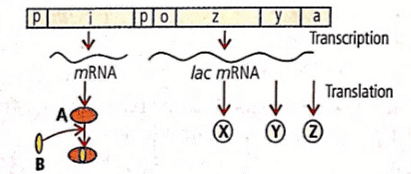NEET Exam > NEET Tests > Biology Class 12 > Test: Regulation of Gene Expression (NCERT) - NEET MCQ
Test: Regulation of Gene Expression (NCERT) - NEET MCQ
Test Description
5 Questions MCQ Test Biology Class 12 - Test: Regulation of Gene Expression (NCERT)
Test: Regulation of Gene Expression (NCERT) for NEET 2024 is part of Biology Class 12 preparation. The Test: Regulation of Gene Expression (NCERT) questions and answers have been
prepared according to the NEET exam syllabus.The Test: Regulation of Gene Expression (NCERT) MCQs are made for NEET 2024 Exam. Find important
definitions, questions, notes, meanings, examples, exercises, MCQs and online tests for Test: Regulation of Gene Expression (NCERT) below.
Solutions of Test: Regulation of Gene Expression (NCERT) questions in English are available as part of our Biology Class 12 for NEET & Test: Regulation of Gene Expression (NCERT) solutions in
Hindi for Biology Class 12 course. Download more important topics, notes, lectures and mock
test series for NEET Exam by signing up for free. Attempt Test: Regulation of Gene Expression (NCERT) | 5 questions in 5 minutes | Mock test for NEET preparation | Free important questions MCQ to study Biology Class 12 for NEET Exam | Download free PDF with solutions
Test: Regulation of Gene Expression (NCERT) - Question 1
During expression of an operon, RNA polymerase binds to
Detailed Solution for Test: Regulation of Gene Expression (NCERT) - Question 1
Test: Regulation of Gene Expression (NCERT) - Question 2
Choose the correct answer from the alternatives given :
Match column I with column II and select the correct option from the given codes.

Match column I with column II and select the correct option from the given codes.

Detailed Solution for Test: Regulation of Gene Expression (NCERT) - Question 2
| 1 Crore+ students have signed up on EduRev. Have you? Download the App |
Test: Regulation of Gene Expression (NCERT) - Question 3
Match column I with column II and select the correct option from the given codes.


Detailed Solution for Test: Regulation of Gene Expression (NCERT) - Question 3
Test: Regulation of Gene Expression (NCERT) - Question 4
Choose the correct answer from the alternatives given:
The given figure shows lac operon and its functioning. Select the option which correctly labels A, B, X, Y and Z.

Detailed Solution for Test: Regulation of Gene Expression (NCERT) - Question 4
Test: Regulation of Gene Expression (NCERT) - Question 5
Regulation of gene expression occurs at the level of
Detailed Solution for Test: Regulation of Gene Expression (NCERT) - Question 5
|
87 videos|294 docs|185 tests
|
Information about Test: Regulation of Gene Expression (NCERT) Page
In this test you can find the Exam questions for Test: Regulation of Gene Expression (NCERT) solved & explained in the simplest way possible.
Besides giving Questions and answers for Test: Regulation of Gene Expression (NCERT), EduRev gives you an ample number of Online tests for practice

















